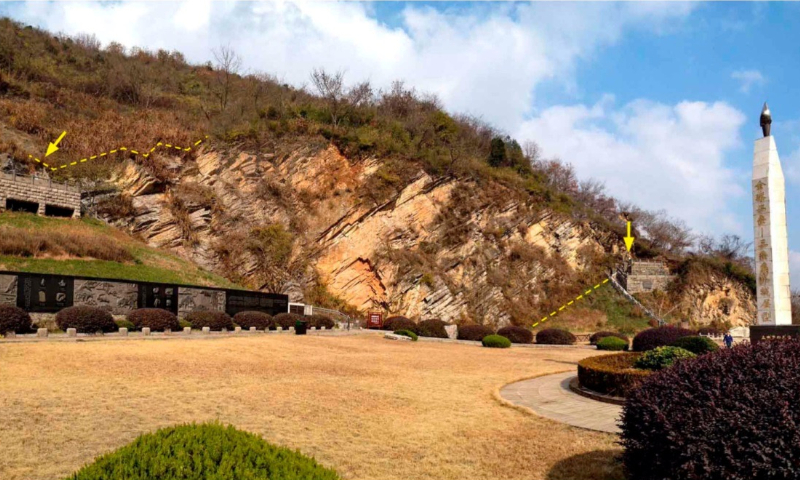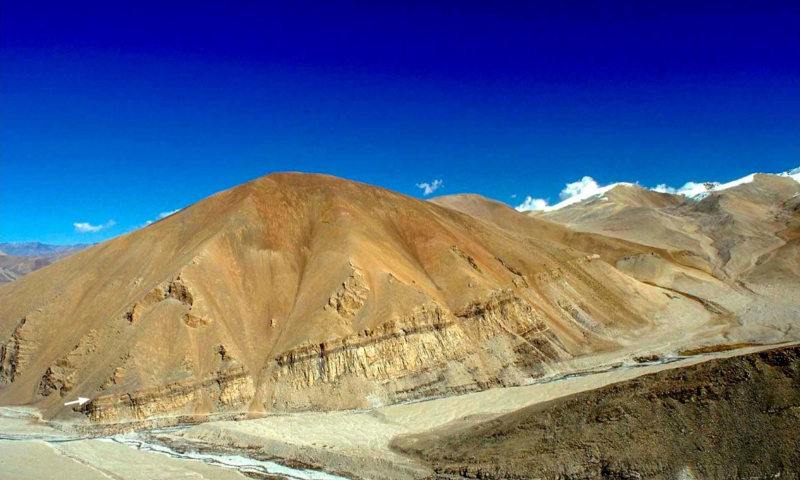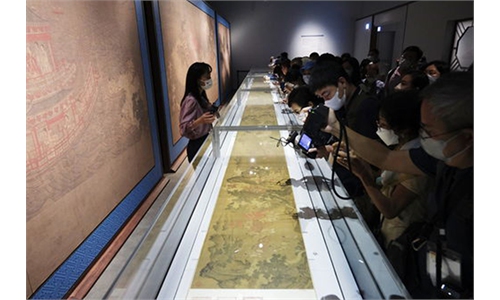Seven Chinese geological heritage sites listed in world's first 100 sites, offering historical reference for understanding evolution of life

Photo: A national geological heritage reserve in Changxing Coal Mountain in Zhejiang Province
Seven Chinese geological heritage sites, including the detachment tectonic system of Rongbu Gorge in Zangnan (the southern part of China's Xizang or Tibet), have been selected as the world's first 100 geological heritage sites, marking China one of countries in the world to obtain the most geological heritage sites, the Global Times learned from the press conference held in Changxing, East China's Zhejiang Province on Wednesday.
The list, announced by International Union of Geological Sciences, includes a national geological heritage reserve in Changxing Coal Mountain, a world geological park in Badan Jaran Desert in Inner Mongolia Autonomous Region, a world natural heritage site and national geological park in Southwest China's Yunnan Province and the detachment tectonic system of Rongbu Gorge in China's Zangnan. These sites cover the fields of petrology, structural geology, stratigraphic paleontology, geography, geomorphology and so on.
"The selection of seven Chinese geological heritage sites shows that their scientific significance, degree of protection and global attention have been recognized by international peers," Shen Shuzhong, Academician of Chinese Academy of Sciences who is a professor from Nanjing University, told the Global Times on Wednesday.
For example, the "golden nail" section in Changxing Coal Mountain records one of the biggest extinction events in geological history 252 million years ago. This extinction event resulted in the extinction of more than 80 percent of the living species in the oceans and on land in a very short period of time. This section provides an extremely important historical reference for how to understand and protect the life and environment of the Earth today, Shen said.

Photo: Rongbu Gorge in China's Zangnan
The Global Times learned that at the beginning of 2022, the International Commission on Geological Relics issued a notice to its member states to select "The First 100 International Union of Geological Sciences Geological Heritage Sites" and selected 34 authoritative experts in the field of geological relics from 21 countries to form a review and selection team. After comprehensive evaluation of 181 candidate sites applied for by 56 countries, the first 100 sites in the field of Earth Science were selected.
The selected list covers a lot of world natural heritage sites, such as the Yellowstone National Park in the US, the Burgess Shale in Canada, and the early human settlements in Tanzania.
Zhang Jianping, Vice President of International Union of Geological Sciences Commission on Geological Relics, told the Global Times on Wednesday that the seven sites have been playing an important role in telling about the formation of the Earth, mineral resources, life evolution and anthropogenesis.
"The selection of the seven sites reflects the country's Earth science research level in the international stage, which is an important reflection of the modernization of the harmonious coexistence between human and nature, which is proposed during the just-concluded 20th National Congress of the Communist Party of China," Zhang said.




